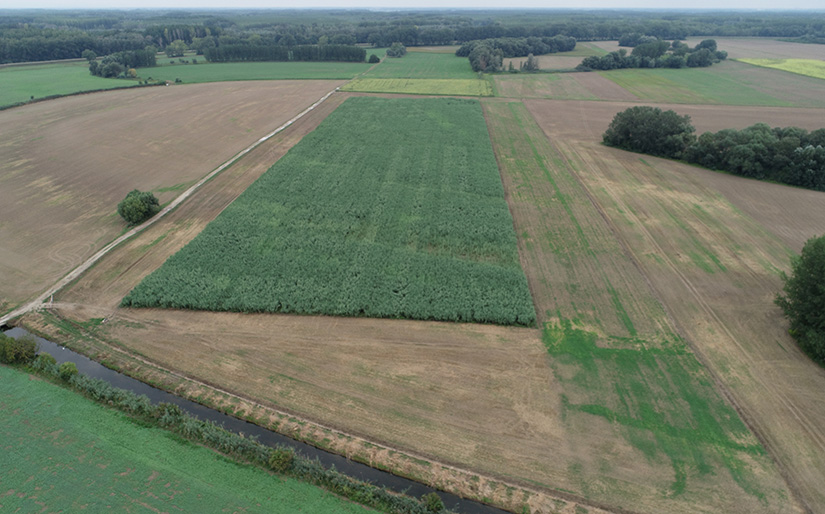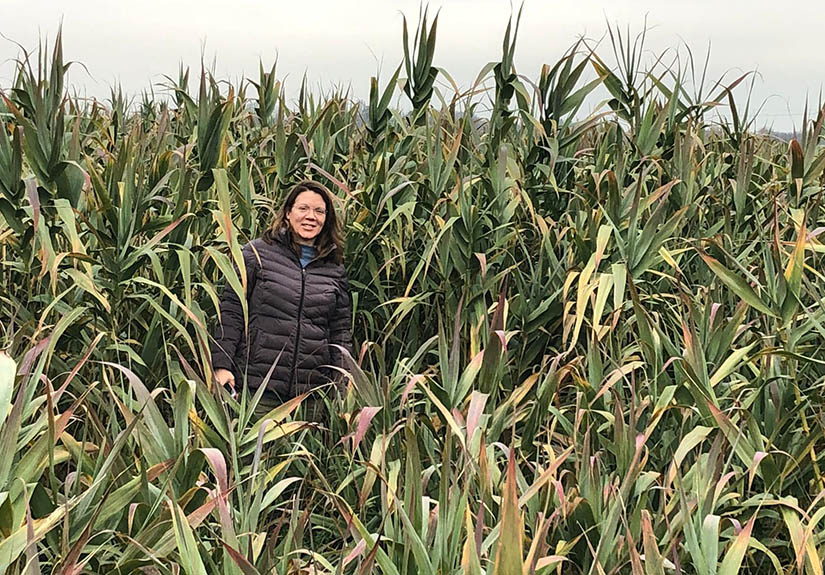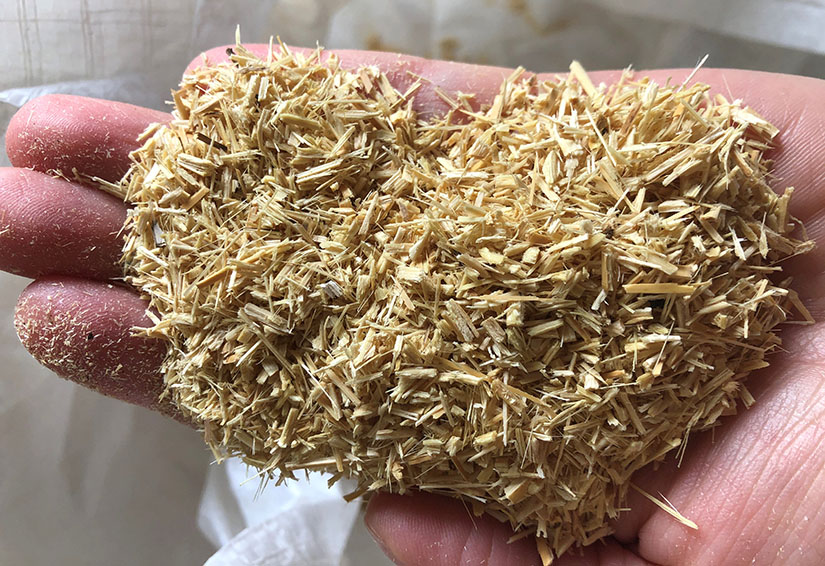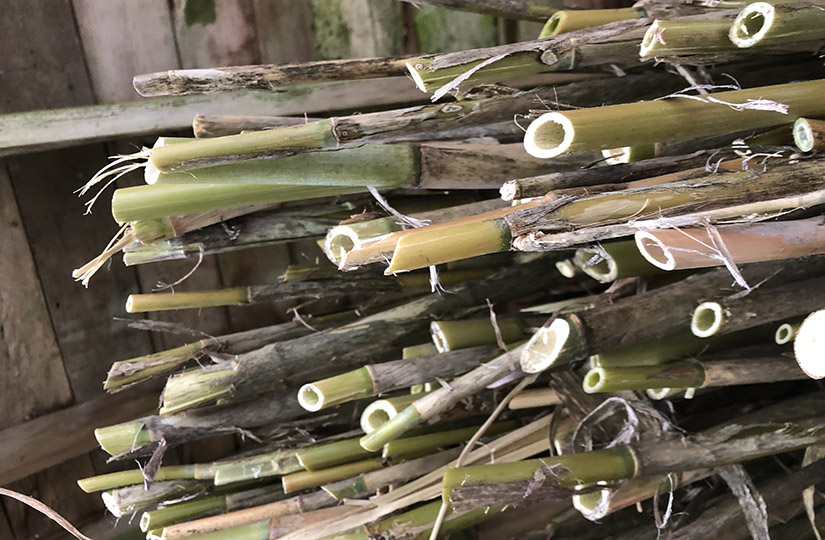GCxN Company's Feedstock Poised To Be More Economical and Versatile

XanoGrass, created by Hexas Biomass, can grow to be upward of 8 feet tall. Photo from Hexas Biomass
Biotech entrepreneur and Hexas Biomass founder and CEO Wendy Owens has brought her groundbreaking (pun intended) crop to the Shell GameChanger Accelerator Powered by NREL (GCxN) after admiring the program from afar for several years.
“It was simply a goal for me,” Owens said. “I was trying to advance us to a point technologically where we would qualify, and it happened to be the right fit starting last year. The level of prestige of the program and the ability to continue to work with the National Renewable Energy Laboratory were key.”

A field of XanoGrass is seen from above. Photo from Hexas Biomass
Hexas already had a relationship with NREL through a previous grant, and the GCxN program offers early-stage companies the resources and expertise available at NREL plus the support of Shell to accelerate new technologies to market.
“We produce a plant-based raw material, called XanoFiber, that can substitute as feedstock instead of wood, food crops for fuel, and fossil-fuel-based raw materials,” Owens said.
XanoGrass is the source for XanoFiber. XanoGrass is a sterile crop bred from a tall grass that has traits of corn and bamboo. It is a perennial, which means even if you cut it, it will grow back.
“We can grow where it’s snowy and cold, and we can grow in extremely hot weather as well,” Owens said. “I don’t want just to replace food crops but to replace some of the 15 billion trees that are cut down each year.”
Hexas is installing a 200-acre site in Hawaii and has more pilot sites in Europe, Arkansas, California, and Washington state.

Hexas CEO Wendy Owens stands in a field of XanoGrass in Hungary. Photo from Hexas Biomass
“Usually, we get a potential feedstock that is a waste from other processes, and we have to figure out how to use that,” NREL Scientist Nancy Dowe said. “Now, we’re getting involved in the very beginning of developing a purpose-grown energy crop by providing valuable information to Hexas on conversion strategies. This is a crop that can be grown wherever, which is very exciting.”
To grow XanoGrass, Hexas does not need any special equipment for planting or cutting, just normal tractors and other farm equipment.
“We are putting a long-term viable source of revenue and energy into rural communities,” Owens said. “We want to create not just jobs but careers. In a place like Hawaii with high energy costs, using locally produced bioenergy feedstocks can help people who live there avoid spending a third of their monthly paychecks on energy.”
To help with proof of concept, Dowe and NREL Senior Researcher Xiaowen Chen continue running tests on XanoFiber to learn more about it and investigate different uses. The most crucial role it could take is replacing corn stover in biofuel production. Corn stover, which is made from what is left from the corn plant after it is harvested, costs about $86 dollars per ton. Because of how efficiently it can be grown, XanoGrass could be 20% less than that cost.

Dried XanoFiber is the result after the plant is harvested and processed. Photo from Hexas Biomass
“If you can reduce the cost of feedstock, then you’re heading in the right direction,” Dowe said. “XanoFiber is even cheaper than what we are forecasting in our techno-economics for corn stover. In our models, we’re trying to get down below $80 per ton to $70 to $75. If you can cut that significantly, possibly by half, with a different feedstock, you are really affecting the economics of the process.”
Corn stover is often turned into ethanol as precursor fuel to producing sustainable aviation fuel (SAF). Chen and Dowe are hoping XanoFiber can replace corn stover for SAF and to see it used to produce biolubricants as well.

Harvested XanoGrass stalks are ready for processing into XanoGrass. Photo from Hexas Biomass
“All the SAF producers or fuel producers are looking for low carbon intensity feedstocks,” Chen said. “Corn stover is seasonal, and you have to store it, which can degrade over time. That increases its cost and carbon intensity. With an alternative feedstock like the XanoGrass, you can harvest it at any time.”
Hexas can grow XanoGrass where farmers cannot grow food, called marginal lands, or on land that was used up and is typically unfarmable now. In a place like Hawaii, that largely means abandoned sugar cane fields.
“Sugar cane is extremely hard on the soil because it sucks the nutrients out,” Owens said. “It’s hard to grow other crops in soil after sugar cane was produced there, but XanoGrass is hardy and creates a symbiotic relationship with soil bacteria and fungi, and it can grow in most environments.”
Learn more about the GCxN program.
Last Updated May 28, 2025
